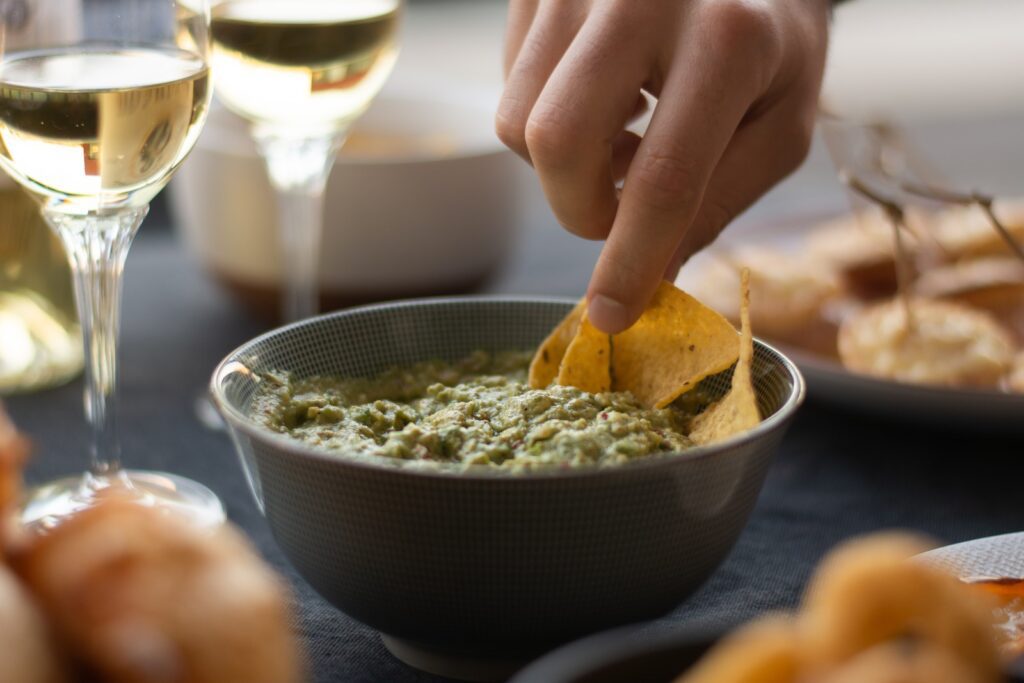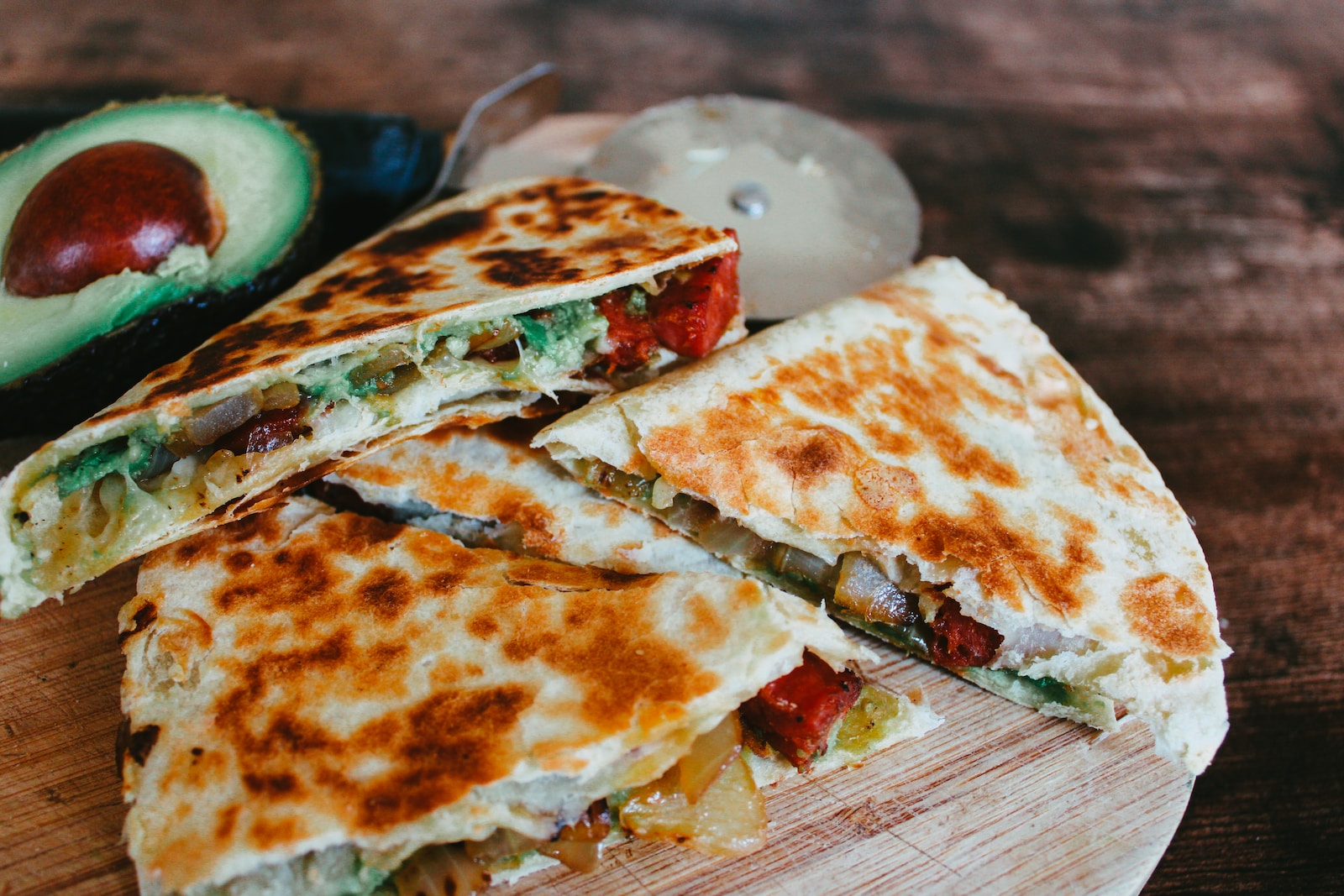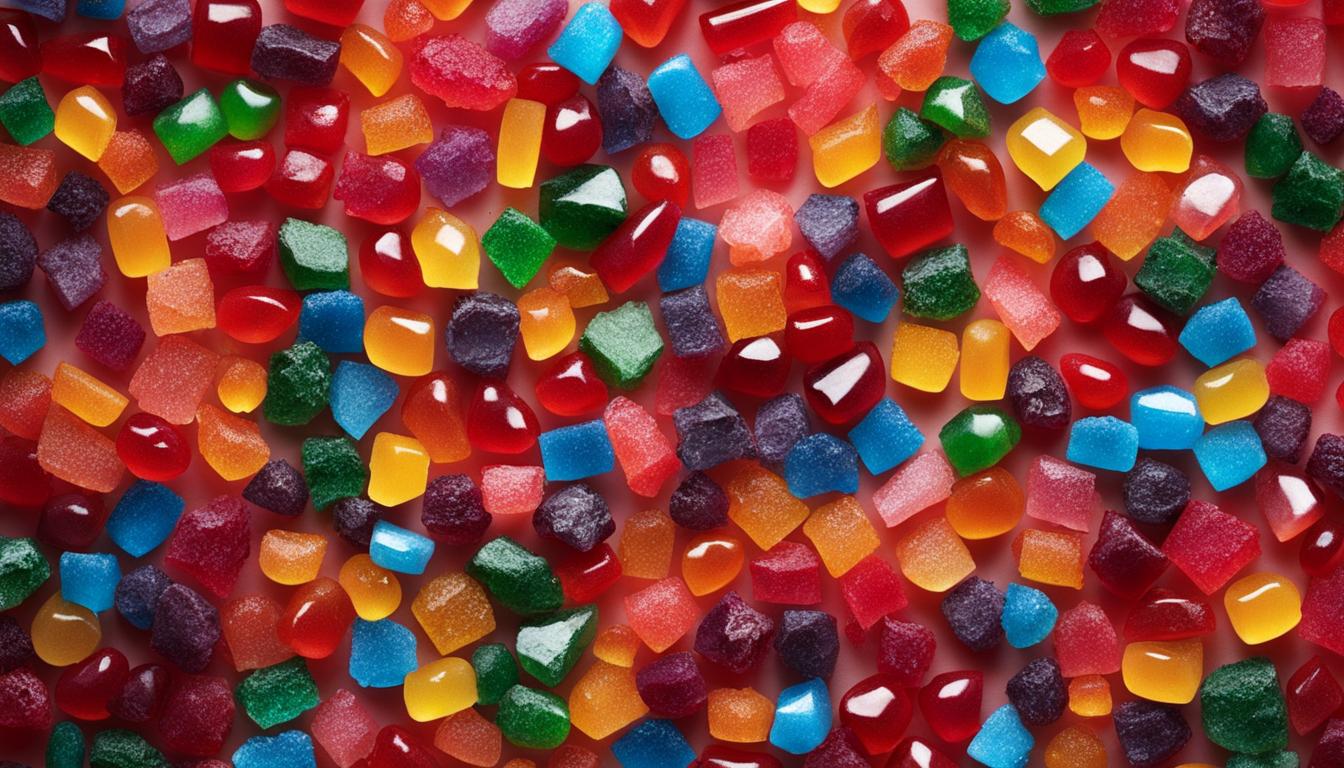The Tale of Two Culinary Traditions: Nachos and Quesadillas
When it comes to the culinary realm, each dish has its unique backstory intertwined with culture, tradition, and sometimes an element of serendipity. Such are the tales of nachos and quesadillas.
Nachos trace their roots back to Piedras Negras, a small Mexican city bordering Texas. The dish was born out of necessity when a resourceful maître d’, Ignacio “Nacho” Anaya, crafted an impromptu meal for patrons using what he had in hand – tortilla chips topped with jalapeño slices and cheese.
Thus, nachos embody the essence of Tex-Mex cuisine – a fusion that celebrates creativity. On the flip side are quesadillas – simple yet versatile parcels that originated in Mexico’s colonial period.
They are the testament to Mexico’s indigenous heritage where corn (in form of tortillas) held religious significance. The cheese used in traditional quesadillas was influenced by Spanish colonisation bringing forth this Mexican staple which favour simplicity over extravagance.
Snapshot: Defining Nachos and Quesadillas
Now that we’ve navigated through their origins let’s define what these dishes entail at their core. When we talk about nachos, visualize a merry chaos – crisp tortilla chips artistically layered with molten cheese (usually processed), embellished with an array of toppings like beans, jalapenos, salsa or even meats for a loaded version. Contrasting this is the humble quesadilla – literally meaning ‘little cheesy thing’.
It’s essentially a tortilla (corn or wheat) folded around melting cheese like Oaxaca or Chihuahua; though gourmet variations may house vegetables or meats within their fold. Unlike nachos served piled high on a platter meant for sharing; quesadillas are usually enjoyed as individual servings, cut into wedges revealing deliciously gooey interiors.

The Main Components: Breaking Down the Ingredients
The Complex Role of Cheese in These Delights
When it comes to nachos and quesadillas, cheese is undeniably a pivotal player. You might not believe it, but the type of cheese used can significantly alter the overall taste and texture.
Nachos, famous for their rich and mouth-watering appeal, commonly employ processed cheese due to its smooth consistency when melted. This ensures that every chip is drenched in delightful cheesiness.
On the other hand, quesadillas usually call for fresh cheeses like Monterey Jack or Cheddar. This kind of cheese not only melts beautifully but also brings about a depth of flavor that processed cheese often lacks.
Tortilla Tales: A Tale of Two Textures
The texture dichotomy between nachos and quesadillas can be traced back to how their tortillas are prepared. Nacho chips are made from corn tortillas cut into triangles and then baked or fried until they reach a golden hue and attain a satisfying crunch – each bite is an auditory feast! Quesadillas, however, require their flour tortillas to stay soft and pliable – they’re lightly toasted on a griddle just enough to encapsulate the melted cheese within its warm embrace.
From Topping Extravaganza to Minimalist Elegance
The world of toppings sets another distinctive line between nachos and quesadillas. Nachos love company – hence you’ll often see them lavishly adorned with jalapenos, olives, salsa, guacamole, sour cream or beef…the list goes on! The idea is to pack as much flavor onto each chip as possible turning it into more than just snack food; it’s an explosion of tastes in every bite!
By contrast, quesadilla’s beauty lies in its simplicity – traditionally containing nothing more than cheese inside its folded halves. However modern takes can include various fillings like grilled chicken or sautéed veggies but they tend toward subtlety rather than sensory overload.
The Art of Assembly: How They’re Put Together
A Definitive Guide to Layering Nachos and Folding Quesadillas
Layering 101: Building a Perfect Pile of Nachos
Crafting the perfect batch of nachos is akin to painting your own culinary masterpiece. Imagine, if you will, the tortilla chips as your canvas – flat and ready to be adorned.
The first layer is crucial; envision an avalanche of cheese blanketing the chips, ensuring each piece gets its fair share of this melty delight. Once appropriately cheesed, spread a layer of your chosen toppings – perhaps beans, jalapenos, or succulent chunks of chicken.
This sequence repeats itself until we reach a harmonious balance between chip and topping. Don’t forget that each subsequent stratum must be more sparing than its predecessor to prevent any detritus from tumbling off the precarious chip mountain.
Remember: when it comes to nachos, architecture matters as much as flavor! So build cautiously—layer by delicious layer—until you have created a gastronomic monument that beckons irresistibly from the plate.
Quesadilla Construction: It’s All About The Fold
The artistry behind building a quesadilla is less about accumulation and more about tactical distribution; here, economy trumps abundance. Begin with a soft flour tortilla laid flat on your workspace.
As though it were a half-moon pie chart illustrating ‘cheesy contentment,’ fill half the tortilla with cheese and any additional desired ingredients. Elegance comes into play next: folding over the unfilled side onto its laden counterpart requires dexterity- two sides merging seamlessly into one cohesive dish.
Ensure that every bit of filling is enclosed within this folded symphony; otherwise, you risk losing critical components in transit from pan to plate. And so it goes – folding quesadillas may lack the multi-layered complexity required for crafting nachos but compensates with an elegance all its own—a testament that sometimes simplicity reigns supreme in creating food that’s satisfying in both form and flavor.
The Dance of Heat and Flavor: Mastering the Art of Nacho Baking
The preparation of nachos is an intricate ballet conducted between various elements, with the oven playing a pivotal role. The objective is to achieve an equitable distribution of heat so that every chip basks in cheesy glory, and none are left forlorn in their crunchy solitude. Preheat your oven to a moderate temperature – about 375 degrees Fahrenheit is generally ideal.
This encourages the cheese to melt evenly without scalding and turning rubbery. Layer your chips on a baking sheet—parchment paper can be a great ally here to avoid sticky aftermaths.
Scatter your cheese judiciously over the chips, ensuring each one has its fair share of this golden delight. Now comes the heart-stopping moment as you slide your tray into the preheated oven.
It’s critical to keep a keen eye on your creation at this stage—melted cheese can swiftly transition from being delightful gooeyness into an unsightly charred mass. Usually, 5-7 minutes should suffice for perfectly melted cheese that envelopes each chip like a warm embrace.
Quesadilla Quirks: Embracing The Griddle’s Charm
On the other side of this delicious dichotomy lies quesadillas—a dish where griddle plays an integral part in imparting it its characteristic appeal. Unlike nachos’ communal cooking approach, quesadillas favor solitary confinement on a heated pan or griddle. The primary aim while cooking quesadillas is attaining that delightful contrast between soft melted cheese inside and crispy toasted tortilla outside.

Begin by lightly oiling your pan or griddle—this helps prevent sticking and contributes towards achieving golden-brown perfection. Ensure the cooking surface is hot before you place your filled tortilla; this prevents sogginess—a complete no-no in quesadilla etiquette!
Cook each side for approximately 3-4 minutes until it turns beautifully browned and crispy while enveloping perfectly melted cheese within its folds. The artistry involved in making these Mexican culinary masterpieces isn’t just about assembling ingredients—it’s about understanding how heat works with different mediums and using this knowledge to create dishes that sing symphonies of flavor.
Serving Styles & Accompaniments: Dips, Sides and More
The Communal Aspect of Nachos with Dips on Side
When it comes to nachos, the beauty truly is in their sharing nature. Picture a grand platter, piled high with these golden triangles of delight, placed at the centre of a jovial gathering.
Each layer is a treasure trove of melted cheese, jalapenos, olives and often beef or chicken. But the true comrades to this scrumptious spectacle are the diverse array of dips lounging alongside – classic salsa roja or verde (red or green salsa), sumptuous guacamole, zesty pico de gallo or velvety sour cream.
Some even venture into queso dip territory for extra cheese indulgence! Each person can tailor each bite according to their preference and palette – making nachos a truly communal and customizable experience.
Quesadilla Quarters served with Salsa or Sour Cream
On the other side of this culinary coin lie quesadillas. These are typically cut into quarters or eighths for ease of eating – think casual yet refined finger food!
While they may not boast as many accompaniments as their nacho counterparts, that doesn’t detract from their charm. A quesadilla’s best friends are often salsa and sour cream – simple yet effective partners that enhance but do not overshadow its flavours.
The warm tortilla wrapped around oozing cheese provides an ample canvas for these dips to shine without dominating the dish’s taste profile. Occasionally you might find them paired with a tangy coleslaw salad on the side for some added crunch and freshness.
Variations Across Regions: From Traditional to Fusion Recipes
When it comes to iconic food dishes like nachos and quesadillas, regional variations abound, reflecting the creativity and individuality inherent in the culinary world. However, despite their divergent paths, both of these Tex-Mex and Authentic Mexican staples have maintained a loyal following worldwide.
The Evolution of Nachos: From Classic to Fully Loaded
Classic nachos are a delectable combination of tortilla chips smothered with melted cheese. However, what differentiates nachos among regions is their toppings. In its simplest Tex-Mex form, you might find jalapeño slices with a dollop of sour cream or guacamole on top.
But as you traverse the culinary landscape towards more experimental kitchens, you’ll discover fully loaded versions that include everything from seasoned ground beef or chicken, refried beans to corn kernels, diced tomatoes and even olives. In regions closer to coastal areas such as Baja California in Mexico or Southern California in the US, seafood variants are prevalent featuring toppings like grilled shrimp or fresh raw fish akin to ceviche.
Meanwhile in some parts of Texas – where chili is king – chili con carne nachos are quite popular. The beauty of this dish lies in its versatility; there’s really no limit to how you can top your tray of nachos.
Diversities in Quesadillas: From Cheese-Only To Gourmet Fillings
The humble quesadilla begins with only two essential ingredients: a tortilla and some cheese. Yet it’s far from being one-dimensional; regional specialties have propelled this simple dish into a world of diverse fillings.
In Northern Mexico for instance, flour tortillas are preferred while more southward regions typically use corn tortillas where they’re filled with Oaxaca cheese – an artisanal stringy white cheese famous throughout Mexico for its superior melting qualities. Moving across borders into American territories though transforms quesadillas into gourmet affairs where anything goes — caramelized onions & mushrooms for vegetarians; slow-cooked pulled pork or shredded chicken for meat lovers; and sautéed bell peppers & corn for those who want added crunchiness.
On some inventive menus you might come across spinach & goat cheese combos or butternut squash & black bean varieties that reflect an innovative fusion between traditional Mexican cuisine and modern global flavors. No matter which region they originate from though each variation has contributed immensely towards enriching the legacy of these dishes beyond traditional borders making them universally loved all over today.
Nutritional Comparison: Which One Is Healthier?
Calorie Count and Nutritional Content in Nachos
When it comes to contemplating the dietary specs of nachos, there are a few variables to consider. Primarily, a serving of nachos comprising corn chips, cheese, guacamole, sour cream and salsa typically boasts anywhere between 350 and 600 calories.
This broad spectrum is due to the varying quantities of these ingredients used in different recipes. However, despite the somewhat steep calorie count, there are some redeeming nutritional aspects.
The corn chips offer fibre and some essential minerals such as iron. The guacamole introduces heart-healthy fats from avocados while salsa brings a small bonanza of vitamins from fresh tomatoes and onions.
Health Aspects of a Quesadilla
Turning our gaze towards quesadillas, we realise they are no slouches either in the nutrition department. They can range anywhere from 300 to 500 calories per serving depending on their fillings.
What gives quesadillas an edge is that they can be easily modified to be healthier without compromising their inherent deliciousness. For instance, using whole wheat tortillas for extra fibre or opting for lean proteins like chicken or beans as filling could make your quesadilla nutritionally richer yet calorically leaner.
Plus, with cheese being an essential part of quesadillas, you’re also getting a decent dose of calcium for better bone health. Both nachos and quesadillas could fit into a balanced diet if served in moderation with thoughtful ingredient choices.
The Great Debate: Nachos or Quesadillas?
In the end, the decision between nachos and quesadillas is a highly personal one. Both these delicious dishes have their own unique characteristics that make them special.
If you’re someone who thrives on variety and loves to share food with friends, nachos could be your perfect match with its multifarious toppings. On the other hand, if you enjoy simplicity coupled with a blend of melted cheese within a soft tortilla, quesadillas might just steal your heart away.
Final Thoughts
While we have delved into their origins, ingredients, cooking techniques and nutritional value; the ultimate beauty of both nachos and quesadillas lies in their versatility. They can be modified to suit any dietary preference or culinary whim.
Regardless of which one you lean towards, both provide an avenue for creativity in the kitchen that can brighten up any gathering or mealtime. Remember to relish each mouthful for its individual charm because whether it’s crunchy nachos loaded with toppings or cheesy quesadillas oozing comfort – there really are no losers in this delightful culinary face-off!
 Skip to main content
Skip to main content


